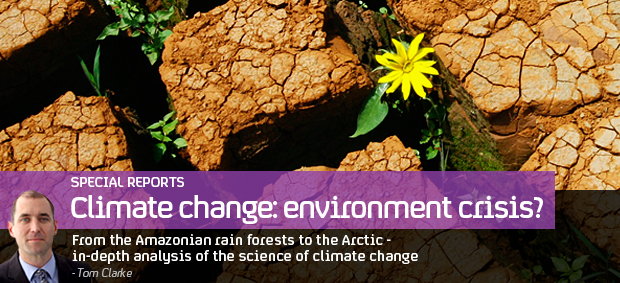The Arctic’s changing climate first hand
After days of drizzle, this morning it started to snow in northern Greenland.

By the last days of September the ground would normally be white and the sea would be starting to freeze in the more sheltered bays and fjords.
But this hasn’t been a normal year in the arctic – and as if to reinforce the point this morning’s snow is melting as soon as it falls.
Earlier this month the amount of sea ice in the arctic ocean reached its minimum extent since records began. Though it still envelops to the very north of this vast island – and will continue to do for many years yet – parts of the ocean that were once iced-over even in summer were exposed for the first time in possibly centuries.
Scientists who, as one told us recently, are “not paid to worry” reacted with alarm. Though sea ice has come and gone before over the last millennia, no-one expected it to melt this far, this fast.
What’s been interesting as we’ve travelled up to Uummannaq – one of the arctic’s northernmost towns worthy of the description – is how people here see no argument about whether or not the climate is changing.

For the last decade they’ve been noticing glaciers retreating further inland, less sea ice on which seal hunting and fishing used to take place, and the fact it is tangibly, palpably, warmer.
Though this year has surprised even them. In July a short, very mild, spell melted a number of vast lakes in the vast Greenland Ice Sheet that covers 60 per cent of the island. It drained quickly off the ice cap and sent a catastrophic flood down a narrow valley in Kangerlussuaq home to the international airport.

The water swept away a new, steel-and-concrete reinforced bridge designed to withstand a one-in-a-thousand year event – out into the sea.
The climate change “debate” that lingers on further south just isn’t happening here. There might still be a fringe argument over whether it’s man-made or due to some natural variability in the arctic climate, but the majority opinion is that the climate change we’ve been talking about isn’t something that “might” happen. It’s something that is most definitely happening and faster than anyone thought possible.
Here the debate is a new one. How should the country adapt? And can it adapt fast enough?
Some see Greenland on the brink of becoming a new arctic power. Strategically well positioned for international trade in an ocean free of summer ice – its rocks packed full of unexploited minerals and oil. Others see traditional ways of life and one of the world’s last great wildernesses about to disappear forever.
I think the “problem” of climate change is well illustrated by Kangerlussuaq’s devastated bridge. How do you go about replacing it? No scientist on earth could tell you what sort of conditions it may have to withstand in future. A country like Greenland would be ruined trying to “climate-proof” itself against every eventuality – so how do you plan for a future which no-one can predict.
When asked what he thought the arctic’s future would look like once scientist told me recently: “who knows, we are currently in the middle of a vast global experiment, and we can’t know what the outcome is going to be.”
